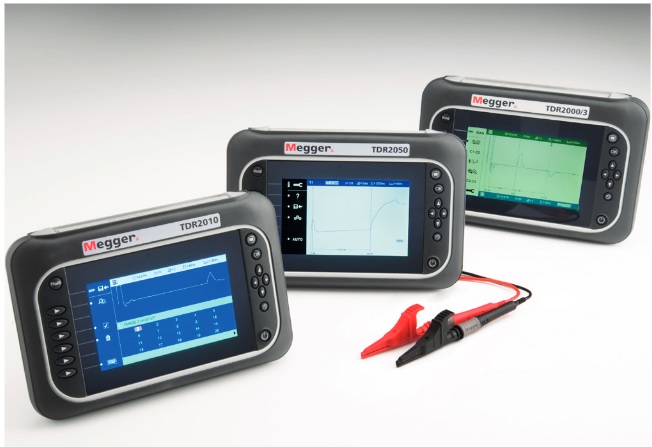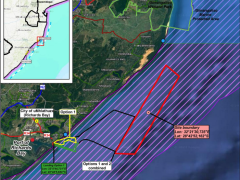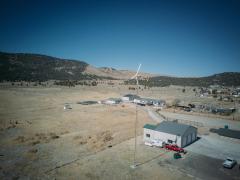Information from Megger
Currently, it is estimated that 80% of utility energy theft resources are spent on residential customer accounts and a recent study suggests that annually the world loses $US 89.3 billion on energy theft. The reported highest losses occur in India (US$16,2-billion), Brazil (US$10,5-billion) and Russia (US$5,1-billion). This practice causes major commercial losses, otherwise known as non-technical losses. These also include metering inaccuracy, customer non-payments, billing and tariff errors However, the loss affecting a utility company the most is energy theft.
Energy theft is not new as it can be traced back to 1886, when it was reported that electricity ‘espionage’ was happening when individuals were tapping into Edison Electricity in New York. To stop the stealing, the superintendent of the power company sent a power surge into the line that was being tapped to ‘burn out and destroy’ foreign objects trespassing the line.
Although a drastic measure, this was the only way to eliminate the theft at the time. Today, we have much less invasive methods of testing and eliminating energy theft, as demonstrated by an electricity, gas, water and telecommunications utility company located in Colombia.
Since beginning operations in 1955, the company started to notice significant increases in the non-technical power losses associated with its power networks. After observing that thousands of customers with high energy consumption were subject to low-cost billing, they decided to investigate this gross anomaly and take appropriate action where necessary.

Energy theft not only increases unit costs for each customer, but the interference with metering equipment, overhead line conductors and underground cables poses serious safety risks to the perpetrators and members of the general public who come into contact with the illegal connections. Utility technicians as well as customers and would-be customers are all engaged in the practice of stealing electrical energy via illegal connections and interference with metering equipment.
Approaching the problem
Before something serious happened, and with the company losing more money, they decided to take action to identify exactly where the energy was being stolen. By simply taking measurements of current delivered to the primary network, and comparing those measurements with the customers’ energy meters, the company was able to quickly deduce that there were illegal connections. In addition, there were disconnections of loads that were connected to fraudulent feeders by customers that precluded the company from taking an accurate measurement of energy being used.
Until recently, the company was engaged in mechanical theft-detecting manoeuvres that involved pulling cable that was installed in ducts, carefully dismantling energy meters for signs of interference and using video scopes inside ducts to enable the location of fraudulent power connections. These procedures involve very long and dangerous inspection times in non-secure conditions, so they needed to find a better solution and equally important, a solution to keep their employees safe.
The company had been using a conventional reflectometer in order to measure impedance changes produced by T-connections. A conventional reflectometer emits low voltage pulses through the cable with a specified width and amplitude causing a blind zone in short distances. Although this sounds like a good solution, it proved not to be, as the illegal connections are generally only a few meters away from the energy meter. This type of technology made detection of connections close to the meter very difficult.
The pulse TDR that was being used gave random results and problems in the energisation of the equipment, without ever giving the possibility of connecting to the energized network. Hence, this was never going to help trace the energy thieves.
The location of customer metering equipment and the presence of high electrical noise and/or harmonics in the network made taking measurements difficult; however, through a higher range adjustment and characteristic behaviour of the signal, the noise and/or harmonics could be seen in the change of impedance produced by a T-joint.
Tracing illegal connections
Further research and determination to find a solution led to the decision to use a step-time domain reflectometer (TDR) as well as a cable tracer set that included a remote antenna and signal select clamp. These devices, like Megger’s TDR2050, can be connected to an energised network and eliminate the effect of the dead zone produced by the pulse width of a conventional TDR. This can effectively measure and identify the presence of T-connections over a short distance.
This advanced dual channel TDR offers a variety of benefits including input protection, trace storage, distance dependent gain, fault identification and a function that allows the user to automatically search the trace to identify the end of the cable under test. Users are able to test straight from the box, a safer location than where they needed to test with the pulse TDR.
This test equipment is designed for use on all metallic paired cables and features a built in 600 V CAT IV input protection filter. It also features a large, high resolution, colour WVGA display with easy set-up features. Each unit’s direction control buttons and soft keys help to provide intuitive and easy operation for the user. An auto selection option ensures that the most effective parameters are selected depending on the range required, aiding in the rapid diagnosis of the TDR trace.
By using this type of instrument, the company is now able to obtain fast and reliable results revealing where energy is being illegally extracted. It has enabled the company to pinpoint the exact areas enabling immediate resolution – much to the chagrin of would-be energy thieves.













